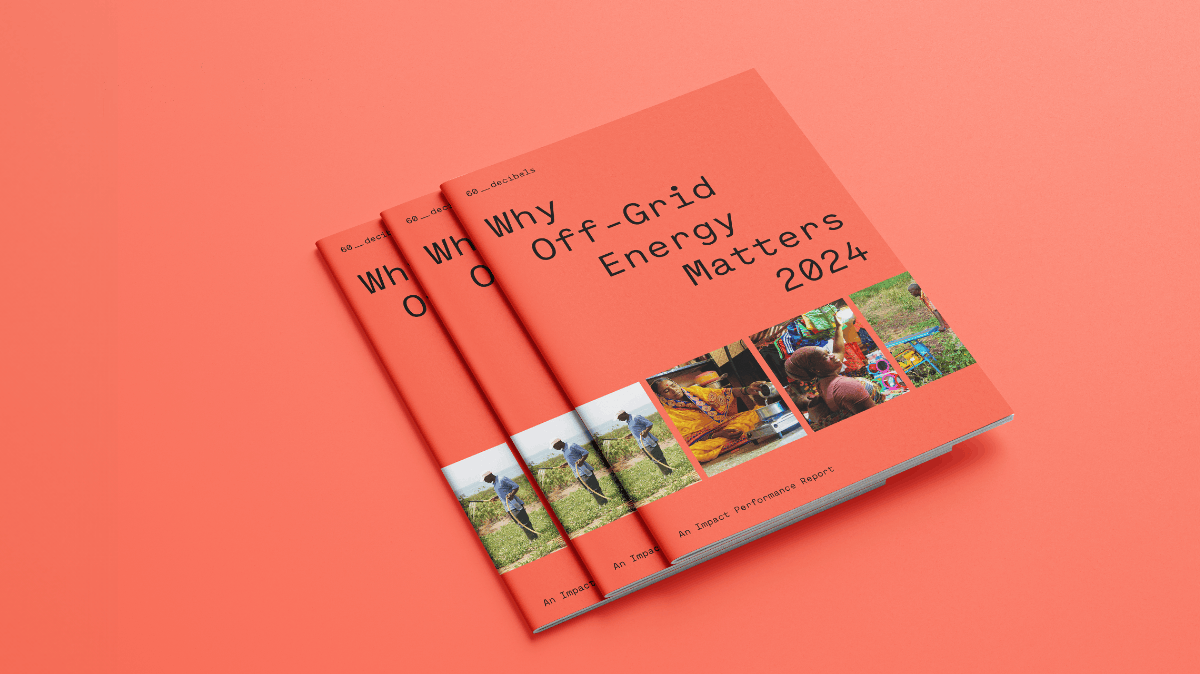

Why Off-Grid Energy Matters 2024
Introducing Why Off-Grid Energy Matters 2024
Based on phone interviews with 79,000+ off-grid energy customers, this report identifies areas for improvement and opportunities for outsized impact performance for energy organisations and investors alike – to aid in bridging the energy divide and achieve the global goal of universal energy access.
This report builds upon the first edition in 2020 to collect more than 2.5 million unique data points over the past 3 years. It includes a larger number of companies, a wider variety of energy products and services, new social performance indicators, and broader market insights. Much of the data is new, reflecting the constantly changing social dynamics and experiences of off-grid energy consumers. The report provides a deep, bottom-up analysis of data to share key insights about what it means to own a modern off-grid energy product: the impact on access, behaviours, and quality of life.
Hearing from customers
The people we spoke to offer a unique window into their lived experience, defining the impact and benefits of these services in their own words, as well as the challenges faced. In turn, this has allowed us to define metrics and measure impact based on what is most material to users, as well as build benchmarks around these metrics.
Please email energy@60decibels.com if you would like us to send you a printable version of the report.

79,000+
30+
164

Top insights
-
Financing comes with pros and cons
Nearly three-quarters of customers we spoke to use some form of financing to pay for their energy access. Pay-as-you-go (PAYGo) offers a chance to reach new customers and enhance affordability, but has led to some customers taking on more than they can manage. A small but significant 5% find the payments for their energy device to be a significant financial burden, and 30% say they have fallen behind on payments at some point.
-
Solar lanterns are small yet mighty
They may not provide the most comprehensive energy access, but the solar lantern still continues to generate the highest impact and customer satisfaction. Their simplicity lends itself well to adoption and ease of use. Whether as a primary or complementary energy source, families use them to move away from polluting and expensive alternatives. Those who use their solar lanterns for productive use see income gains too.
-
Customers are satisfied, but there’s room for improvement
Overall, the off-grid energy sector performs well globally when it comes to customer satisfaction, with a Net Promoter Score® (NPS)
of 43. The NPS now is similar to the 45 in our 2020 report. However, looking at individual results relative to the benchmark reveals a wide range of scores. The lowest NPS in our benchmark is -100, and the highest is 91. Check out our ranking chart to understand that scale on page 35 of the report. -
Energy products are not always easy to use
A third of customers experience challenges using their energy product or service (unchanged from 2020). When this happens, customers and their families can’t unlock the many benefits of improved energy access. Nearly 25% of the 79,000+ customers we interviewed have unresolved issues which affects impact, satisfaction, and likely future sales. The NPS of customers who face no challenges is 56, while the NPS for those with unresolved issues is a not-so-great 1.
-
Locally-owned and/or women-led enterprises are impact all-stars
We launched our Inclusive Energy Opportunity to shine a light on early-stage locally-owned and/or women-led organisations. Such businesses have traditionally been somewhat neglected in terms of access to capital. And that’s a miss given that our findings point to locally-owned and/or women-led organisations generating higher impact, being more inclusive (over a range of metrics), and earning better satisfaction rates than their peers.

